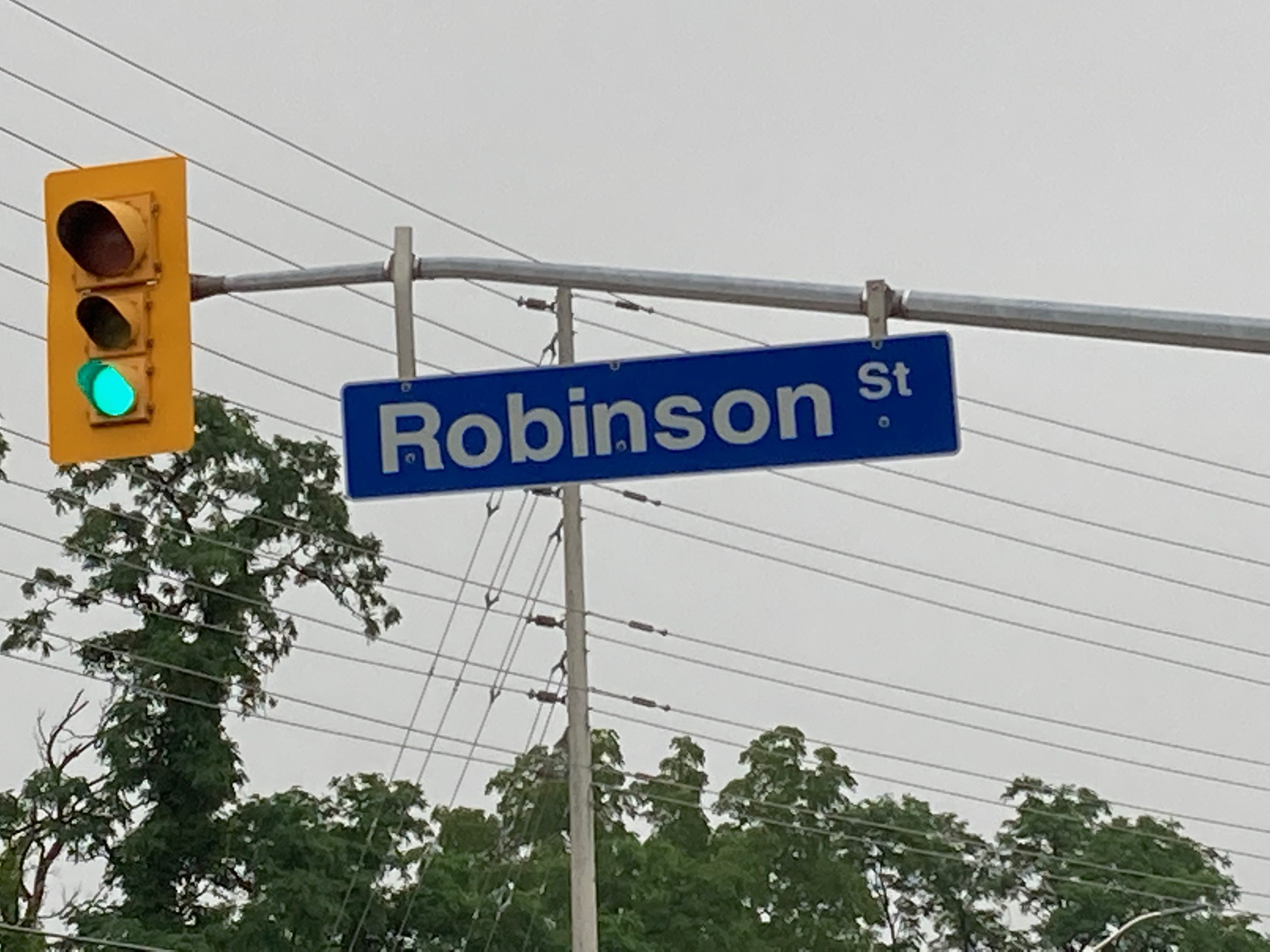This article is the conclusion of a 5-part series that explores Colonial connections on our landscape here in the City of Mississauga.
This series was written by UTM graduate Omar El Sharkawy as part of his Historical Studies Internship placement with Heritage Mississauga through the University of Toronto Mississauga Historical Studies Internship Program.
This week’s article explores historical naming conventions and how road names reflect, in part, who had agency and influence on when and how things were named.
Eternalizing Property: Wealth, Social Capital, and Street Names
By Omar El Sharkawy for Heritage Mississauga
For as peripheral as their roads may appear now, the early major settler families of the 1800s through to the 1830s held great capital in historic Mississauga – social, political, and financial. The urbanscapes based most notably on the namesakes of Cawthra, Jarvis, and Robinson demonstrated a convention of naming in early 19th century Upper Canada and historic Mississauga rooted in propertied interest, local influence, and community networks.
This was most present in the process of naming, and the legacy which these families have made indelible in Mississauga’s urban space. Naming in the early Family compact period reflects important aspects of the historical narrative of toponymy.
Patronage and the power in naming granted by virtue of property ownership is one such theme. As is the decentralized and often community-based nature of naming enterprises, both in the project of naming itself and in the basis of selected names. These processes are both specific to this period of history, most notably from 1812 to 1837, yet they also inform the molding of toponymies in general, specifically in relation to patronage and local priorities in community naming.
The toponymies of the Family Compact era are something of a microcosm for a period in which power rested largely in the hands of a Loyalist elite. Though there is scholarly disagreement about the cohesion and social width of the Family Compact, its presence in the period was undeniable. Its membership composed a business and settler elite, drawn from individuals whose families or persons held great sway, often politically, socially, and financially, within their own communities.
Though the term historically refers to the Upper Canadian family compact which shaped provincial politics more widely, the Family Compact was as much a local phenomenon. It was this local gravitas, too, that was often the context for the names which rested in localities like historic Mississauga. Frederick Starr Jarvis, for example, did not hold a position within the provincial oligarchy, yet it is his namesake which Jarvis Street in Mississauga bears today.

As was the case for the Cawthra family, who were of major commercial and landed prominence in the town. John Beverly Robinson, himself a member of the provincial Family Compact, similarly had a road named after him.

There was no convention in which one needed to belong to the Family Compact to have a road with their namesake, however. Such affairs transpired largely on a local level, in contrast to the highway and county names laid out from the center by Simcoe in the 1790s, for example.
The overall dynamics of the Family Compact era rather than the institution itself (however informal) often defined the kind of social relations which reproduced themselves onto the canvas of road naming.
Given that naming in localities such as historic Mississauga was a largely localized affair too, the limits of the convention were usually set by land ownership and community influence. This occurred in cases even where the individual in question was not highly prominent but was still of some local note. One residential road in Erindale, Hammond Drive, took its name from the prominent land owner who built his house there, Oliver Hammond.
As local capital, big or small, was a frequent basis of reference for toponymies at the time, many road names reflected this kind of specific local identity tied to the person of a prominent individual.
Whereas it is easy to think of road names as representing rather grandiose processes of memory or celebration tied to nationally or historically elevated persons – to which Mississauga is certainly not an exception (e.g., Winston Churchill Boulevard and Dundas Street), this local component rung wide in the context of the Family Compact era.
At a period in time in which both provincial and municipal politics were shaped rather profoundly by individuals and families of note, priorities of local naming took a shape illustrative of their propertied and political interest within the community.
The Family Compact defined more than just a style of politics during the period: it also informed a convention of road naming tied to who had the most social stakes within an individual community.
The outcome populated streets across Upper Canadian towns like Mississauga with toponymies of an inward looking and decentralized nature. Local families and individuals used themselves as the frame by which parts of the urbanscape were named.
The spaces which bear their names were something of extensions of their social capital within their communities. Quite importantly, these names were determined on a community basis and in relation to property.
Roads like Adamson, Jarvis, Robinson, and Cawthra tended to be local and fell almost entirely within the domain of community naming. Where the community could deliberate on a name, the possession of local influence or simply much landed property was an important determinant.

As a result, the names embodied in several of the period’s roads manifested how wealth and social status can decide on who possesses historical agency in shaping the landscape.
[1] Patrick Brode, Sir John Beverly Robinson: Bone and Sinew of the Family Compact, (Toronto: University of Toronto Press, 1984), 142-143, 145.
[1] Brode, Bone and Sinew, 145.
[1] Mary Byers and Margaret McBurney, The Governor’s Road, (Toronto: University of Toronto Press, 1982), 28.



Comments are closed.